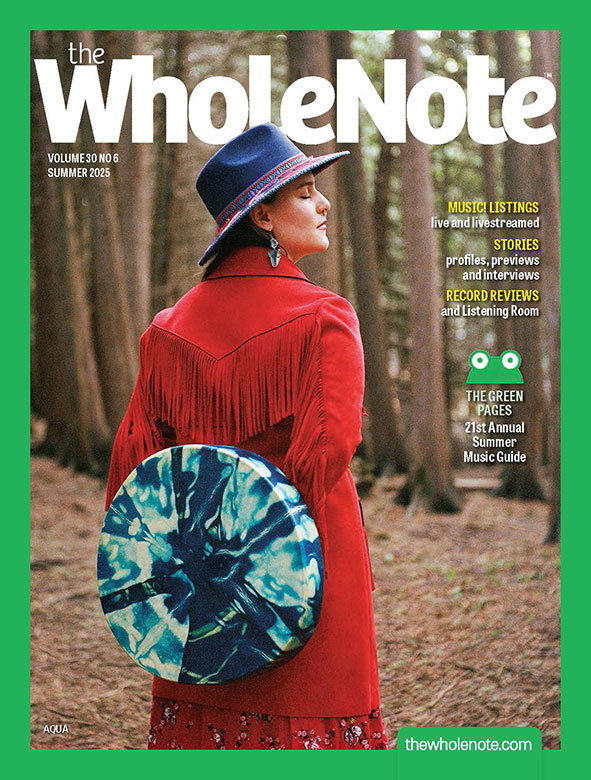Back in our naïve youth as a magazine we used to handcuff ourselves by proclaiming one or another month of the year as [some particular genre] month. As in “April is Opera Month”; or “March is New Music Month.”
One problem was, of course, that we failed to inform the hundreds of presenters putting on concerts every month far enough in advance so that they could change their plans to fit with our executive orders.
Another was that, with every passing year, our tidy little rolodex of genres has eroded as rapidly as the memories of those among us who still know what a rolodex is.
But of all the “this month is” edicts and proclamations, the one that still feels intuitively right to me is the next one coming up after this one: thanks to the presence in our upcoming May edition of our 15th annual Choral Canary Pages, there is still an argument to be made for saying that “May is Choral Month” in The WholeNote.
It’s not because all our stories in the May issue will have choral themes. It’s because our Canary Pages are not primarily designed to give audiences information about what choral performances are coming up, but to give you and me as much information as possible about what choirs are out there to join, so that we can give ourselves an opportunity to breathe in loud and joyful unison, voicing common hopes and feelings with other people on a regular basis. In a world that conspires in every imaginable way to have us twittering away in querulous, frightened or acrimonious solitude, more than ever, making music together affirms our common humanity.
More than a decade ago I explained in this very spot that the reason we had called it the Canary Pages was drawn from the dark days of coal mining, where caged canaries were strategically deployed in the tunnels to alert miners to the presence of poisonous gases. “As long as the canary is singing, you’re O.K.,” the theory went. “But if the canary croaks, metaphorically anyway, hold your breath and run.”
Aside from some surly Hamiltonian (since moved to Sarnia, I believe) who blasted us for holding up cruelty to animals as something laudable, it’s an image that stands up rather well I think. We can, to a significant extent, gauge the extent to which our arts environment is becoming toxic by whether community-based, collective music-making remain stable because those participating in them are able to remain within those communities.
The erosion from the urban landscape of local venues to listen to live music is getting some attention these days, which is good. But the displacement of the people who work in those spaces, musicians and non-musicians alike, because they can no longer afford to live in the communities they work in, tells us even more about the fragile musical health of our cities.
publisher@thewholenote.com




